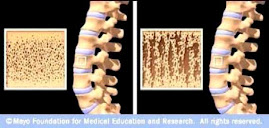We analyze osteoporosis prevalence and determinants of bone mineral density (BMD) in patients with type 1 and 2 diabetes. Three hundred and ninety-eight consecutive diabetic patients from a single outpatient clinic received a standardized questionnaire on osteoporosis risk factors and were evaluated for diabetes-related complications, HbA1c levels, and lumbar spine (LS) and femoral neck (FN) BMD. Of these, 139 (71 men, 68 women) type 1 and 243 (115 men, 128 women) type 2 diabetes patients were included in the study. BMD (T-scores and values adjusted for age, BMI and duration of disease) was compared between patient groups and between patients with type 2 diabetes and population-based controls (255 men, 249 women).
For both genders, adjusted BMD was not different between the type 1 and type 2 diabetes groups but was higher in the type 2 group compared with controls. Osteoporosis prevalence (BMD T-score < −2.5 SD) at FN and LS was equivalent in the type 1 and type 2 diabetes groups, but lower in type 2 patients compared with controls (FN: 13.0% vs 21.2%, LS: 6.1% vs 14.9% men; FN: 21.9% vs 32.1%, LS: 9.4% vs 26.9% women). Osteoporosis prevalence was higher at FN-BMD than at LS-BMD. BMD was positively correlated with BMI and negatively correlated with age, but not correlated with diabetes-specific parameters (therapy, HbBA1c, micro- and macrovascular complications) in all subgroups. Fragility fracture prevalence was low (5.2%) and not different between diabetes groups. Fracture patients had lower BMDs compared with those without fractures; however, BMD T-score was above −2.5 SD in most patients.
Our study shows a similar risk of
osteoporosis in patients with type 1 diabetes based on low BMD
(T-score < −2.5 SD), which was not different from the prevalence in patients
with type 2 diabetes despite them being approximately 20 years older. The
FN-BMD was particularly decreased; therefore evaluation of osteoporosis risk in
younger patients with type 1 diabetes should include both spinal and
FN-BMD-measurements.
We found increased LS-BMD and FN-BMD
in patients with type 2 diabetes compared with a non-diabetic, population-based
control group. There was a trend for lower BMD in diabetic patients (type 1 and
2) with osteoporotic fractures compared with those without fractures; however,
the fracture threshold is higher than in non-diabetic populations. Further
longitudinal cohort studies are required, focusing on the risk of fractures and
changes in bone metabolism in patients with diabetes.
BMD measurements and the evaluation
of BMD-independent risk factors for fractures should be included in the routine
management of patients with diabetes mellitus because the prediction of
osteoporosis solely by clinical diabetes-specific parameters was not possible.
The evidence suggests that osteoporosis, and related fractures, is a clinically
significant and commonly underestimated problem in patients with type 1 and
type 2 diabetes mellitus.
http://www.medscape.com/viewarticle/825846_1



No comments:
Post a Comment